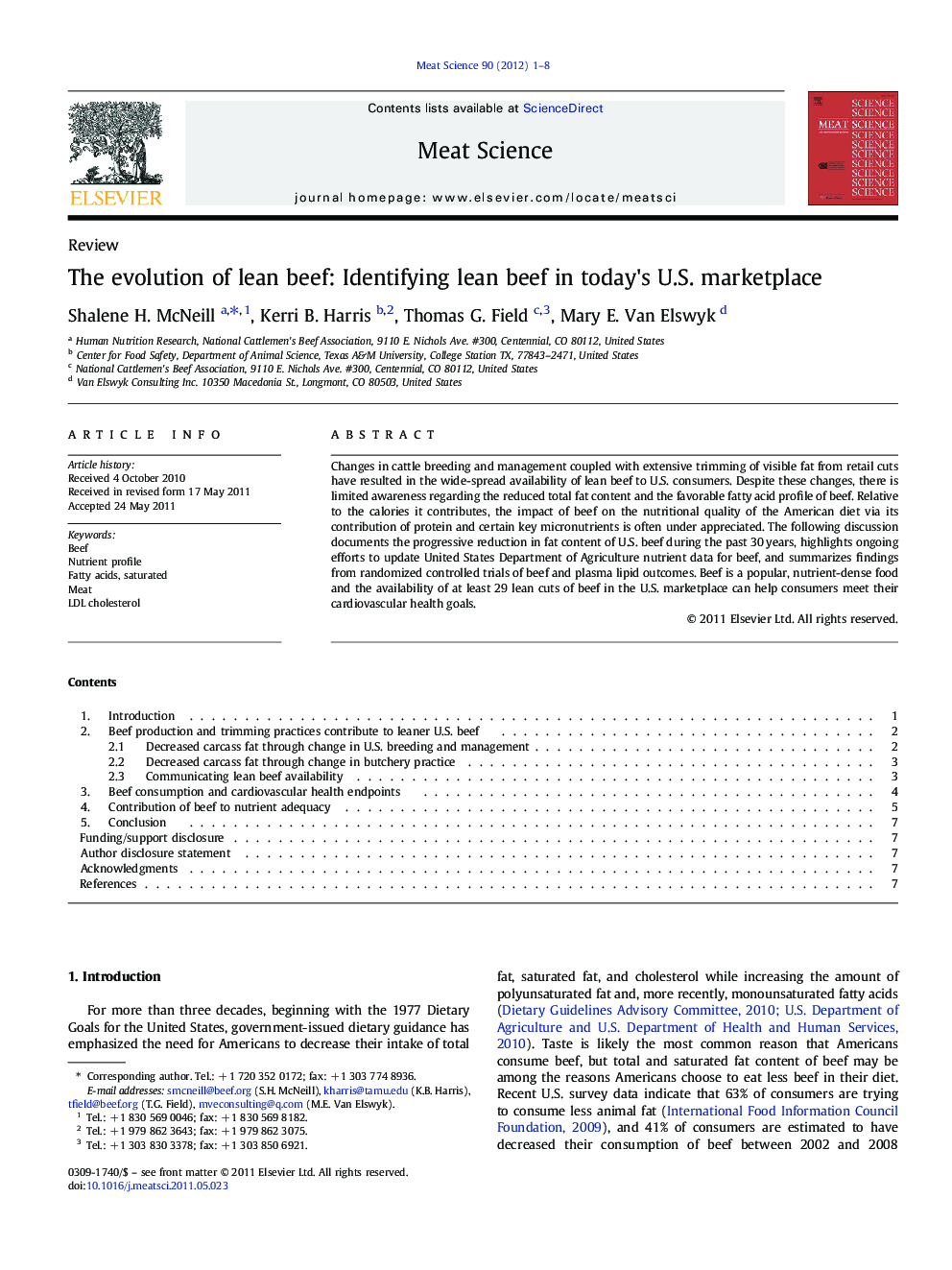| Article ID | Journal | Published Year | Pages | File Type |
|---|---|---|---|---|
| 5792703 | Meat Science | 2012 | 8 Pages |
Changes in cattle breeding and management coupled with extensive trimming of visible fat from retail cuts have resulted in the wide-spread availability of lean beef to U.S. consumers. Despite these changes, there is limited awareness regarding the reduced total fat content and the favorable fatty acid profile of beef. Relative to the calories it contributes, the impact of beef on the nutritional quality of the American diet via its contribution of protein and certain key micronutrients is often under appreciated. The following discussion documents the progressive reduction in fat content of U.S. beef during the past 30Â years, highlights ongoing efforts to update United States Department of Agriculture nutrient data for beef, and summarizes findings from randomized controlled trials of beef and plasma lipid outcomes. Beef is a popular, nutrient-dense food and the availability of at least 29 lean cuts of beef in the U.S. marketplace can help consumers meet their cardiovascular health goals.
⺠Progressive change in U.S. cattle breeding has resulted in decreased carcass fat. ⺠Progressive change in cattle management has also contributed to leaner beef. ⺠Extensive retail trim of beef cuts is the result of consumer demand for leaner beef. ⺠Evidence supports the role of lean beef in cardiovascular health.
